|
History happens everywhere—even your own backyard. Have you ever heard of Carrie Chapman Catt? From 1919-1928 Carrie lived in a house near mine called Juniper Ledge. She was a suffragist, one of many who fought for women’s right to vote. Without her, the Nineteenth Amendment to the U.S. Constitution, which gave women the vote, might never have been approved. Born in 1859 and raised in Iowa, Carrie got an early lesson in politics when she asked why her mother wasn’t voting in the 1872 presidential election. Everyone laughed, but not Carrie. She thought it unfair that women couldn’t vote—and wasn’t afraid to say so. In college Carrie joined a literary society. Women were forbidden from speaking during meetings. After Carrie spoke at a debate, the rules were changed to allow women’s participation. A woman of many “firsts,” Carrie worked as a teacher after graduation and became one of the first female school superintendents in the country. After marrying she moved to San Francisco. When her husband died she supported herself by working as that city’s first female newspaper reporter. Back in Iowa, Carrie joined the Iowa Woman Suffrage Association, part of the National American Woman Suffrage Association (NAWSA), led by Susan B. Anthony. Carrie’s rousing speeches brought her national attention. When Susan retired, Carrie became NAWSA’s president, leading suffrage campaigns all over the country and supervising a million volunteers. Carrie’s “Winning Plan” for the vote worked on both state and federal levels. She supported President Woodrow Wilson’s efforts in World War I, even though she was a peace activist. She knew if Wilson backed women’s suffrage, Congress would vote for it. And that’s exactly what happened. Carrie’s activism didn’t stop at the U.S. border. As founder and president of the International Woman Suffrage Alliance, she advocated for democracy and women’s rights on four continents. She also founded the League of Women Voters to educate women on political issues, worked for world peace, and campaigned against child labor and Hitler’s treatment of Jews. When the Nineteenth Amendment was approved in 1920, Carrie was living at Juniper Ledge. There she nailed plaques to trees in honor of women who fought for the vote. Juniper Ledge still stands, right down the street from the park where today kids play ball. Who knows what other people, places and stories from the past they may find in the neighborhood?
0 Comments
 When he was a young man in his mid-twenties, future Roman leader Julius Caesar was voyaging across the Mediterranean Sea. Pirates swarmed over his ship. They took him to their base on tiny Farmakonisi Island, which lies off the coast of Asia Minor (modern-day Turkey), and held him for ransom. When he learned how much the pirates were demanding for his release, Caesar laughed. Do you have any idea who I am, he asked. I belong to one of Rome’s most important families. So you can get more money for me—a lot more—almost three times as much. The astonished pirates were only too happy to oblige him. Keeping a friend and two servants with him on Farmakonisi, Caesar ordered the rest of his traveling party to go to Asia Minor and raise his ransom. While they were doing that, Caesar acted as if he were the ruler of the tiny island, rather than a captive cowering in fright. He ordered the pirates to attend lectures and poetry readings he gave, and prodded those who nodded off as he droned on and on and on. When he wanted to sleep, he ordered the pirates to either speak in whispers or go to another part of the island. He even played games with them. He also told them that when he was released, I promise I will hunt you down and execute you. In the spirit of bonhomie he engendered, the pirates apparently thought he was joking. He wasn’t. Though outwardly he was friendly with the pirates, he seethed inwardly at the humiliation of being taken prisoner. After the ransom was paid, Caesar sailed to a nearby port. He raised a fleet of ships and scores of armed men. He returned to Farmakonisi, captured the pirates, and reclaimed the ransom money. He threw his former captors into prison. They didn’t stay there long. Caesar crucified them. He did show some mercy. Since crucifixion was a long, lingering death, he cut their throats so they died instantly.  MLA 8 Citation
Whiting, Jim. "A Man of His Word." Nonfiction Minute, iNK Think Tank, 26 Mar. 2018, www.nonfictionminute.org/the-nonfiction-minute/A-Man-of-his-Word. You need to write a biography, a story of someone’s life. What do you do to discover the person’s silly quirks or darkest secrets? Probably you go online. That’s a good start, but that’s all it is—a start. Real authors—and students completing assignments—dig deeper. Only by checking a variety of resources can you find the juiciest facts to make your biographies come alive. For example, when I write about someone, I start by reading an overview of their life. I might check a general resource, such as Wikipedia, But not all information is accurate in this or other websites, so I play detective to locate resources that confirm what I’m reading. One way to find good resources is to look at the bottom of the Wikipedia article and see which articles and books that author used as resources. If these sources seem credible to you, click to find the original articles the author used. Another source of information is your librarian. Librarians love to delve into the craziest topics. Need to locate a long-lost relative of your biography subject or trail where that person lived over the years, ask your librarian. Librarians locate books, specialized online resources, and newspapers and magazines that can help you. When I researched Dolores Huerta Stands Strong: The Woman Who Demanded Justice, I wanted more personal resources. So I looked for people to interview who knew her at different times of her life. I called up volunteers who marched with Dolores to protest unfair treatment of farm workers. I found others who helped the public learn not to eat table grapes until farm owners agreed to pay farm workers fair wages and provide clean housing, breaks in the fields, and places to go to the bathroom. When I wanted to learn how Dolores Huerta worked to improve lives of women, I contacted Gloria Steinem, a leader of the 1970s women’s movement. I talked with Huerta’s children. I prepared before each interview. I learned about connections between the interviewees and my biography subject. I wrote questions ahead of time, so I wasn’t wasting interviewee time. At the end of each interview, I asked: “Is there something else you remember?’ That’s when I got some of the best stories. Between interviews, books, magazine and newspaper articles, I found enough material to tell Huerta’s life. You can with your biography, too. 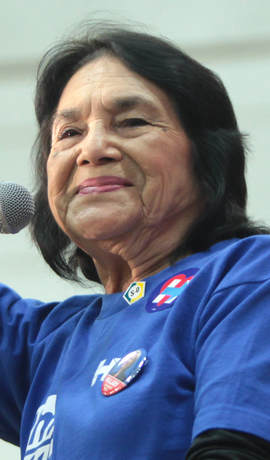 Once you've researched and written your biography, you will probably want to add a picture of your subject. You've probably seen many pictures during your research, but you must be careful about permission to use photographs or drawings. You can find some good guidelines at How to Find Free Images With Google's Advanced Image Search. This photo of Delores Huerta is from her Wikipedia article. Most photos from Wikipedia may be used for non business purposes. By clicking on a picture, you are taken to Wikimedia, the place where photos reside. You will be able to download a photo and decide how you want to caption it. Here's what it says about this photo in Wikimedia: Description English: Dolores speaking at an event in Phoenix, Arizona. Date: 20 March 2016 Author: Gage Skidmore This information will allow you to tell your reader about the photo in the form of a caption and also credit your source: Delores Huerta speaking at an event in Phoenix Arizona on March 20, 1916. Photo by Gage Skidmore via Wikimedia 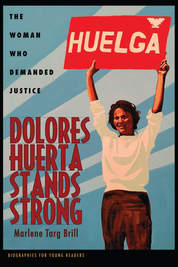 Marlene Targ Brill's Dolores Huerta Stands Strong follows Huerta’s life from the mining communities of the Southwest where her father toiled, to the vineyards and fields of California, and across the country to the present day. As she worked for fair treatment for others, Dolores earned the nation’s highest honors. More important, she found her voice.  The United States, in the 1880s, had become an industrial power in the world, but factory workers could hardly feed their families. Miners spent long days down in the dangerous dark, digging a wealth of coal out of the earth, yet they were dirt-poor. Farm families were going broke too. They barely had the money to pay rich bankers the interest on loans they took out to buy seeds or to pay what the railroad charged to ship the crops that hadn’t dried up in a drought or got gobbled by hungry grasshoppers. Many a broke homesteader went back east. Lettered on the covers of their wagons: “IN GOD WE TRUSTED. IN KANSAS WE BUSTED!” Mary E. Lease, a Pennsylvania schoolteacher, went to Kansas, but she stayed there. And she was among the multitudes, who wondered why so many Americans were so poor in a country that was so rich? Where was the money going? Judging from what she read in the papers and heard down at the general store, the money seemed to be in the pockets of men who owned the mines, factories, railroads, and banks. And rather than pay people decent wages, they seemed to be paying politicians to make laws to help them stay rich and get richer. Sound familiar? In the early 1890s, folks got together and formed their own “People’s (or Populist) Party.” What did they want? Fairness, more government regulations, less silver, and more printed paper money. It wouldn’t be worth as much; but at least there’d be more of it to go around! And right in the middle of this uprising was fiery Mrs. Lease. At rallies around the Midwest, the South, even at the Chicago World’s Fair in 1893, Mrs. Lease whipped up the crowds, crying out, “We are for humanity against the corporations – for perishing flesh and blood against the money bags!” People called her a “Patrick Henry in petticoats,” after the great Revolutionary War speechmaker. “Wall Street owns the country. When I get through with the silk-hatted easterners, they will know that the Kansas prairies are on fire!” Oh, they knew it all right, for a while anyway. While it raged, this political tornado blew nine Populists into Congress. But the people’s movement fizzled out in the early 1900s. At least old Mrs. Lease lived to see some populist dreams come true. In the early 1930s, when so many Americans hit bottom, Franklin D. Roosevelt became President. Under FDR’s “New Deal” policies, the people got help from their very own government and the Wall Street banks and businesses were reined for a considerable time. Ah, but they’ve regained much of their former power and Mary E. Lease lies restless in her grave. 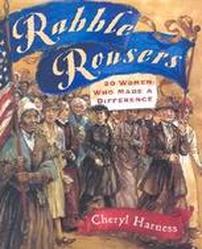 The perfect browsing volume for Women's History Month, Cheryl Harness's Rabble Rousers offers short, spirited profiles of twenty women who, like Mary E. Lease, impacted life in America by speaking out against injustice and fighting for social improvements. The folksy, friendly narrative introduces such fascinating figures as Sojourner Truth, abolitionist preacher; Dr. Mary Edwards Walker, a Civil War physician; Margaret Sanger, birth control pioneer; and Doris Haddock, a ninety-two-year-old champion of campaign-finance reform. The book spans over two hundred years of American history and includes time lines for such important social movements as abolition, woman suffrage, labor, and civil rights. Readers inspired by these fiery women can use the civil action tips and resources in the back of the book to do some of their own rabble-rousing. For more information, click here. ________________________________________ MLA 8 Citation
Harness, Cheryl. "Mary E. Lease: Queen of the Populist Tornado." Nonfiction Minute, iNK Think Tank, 12 Apr. 2018, www.nonfictionminute.org/the-nonfiction-minute/ mary-e-lease-queen-of-the-populist-tornado.  On Sunday morning, December 7, 1941, Cornelia Fort was doing something few people expected a woman to do. This 22-year-old was in a small two-seater plane, flying over Honolulu’s Pearl Harbor, teaching a student to fly. At that time, most people felt that flying was a “man’s job.” Cornelia had fallen in love with flying about two years earlier when, just for fun, she took a ride in a small plane. That ride changed her life. She took flying lessons and became such a good pilot that she was hired to teach others, one of the few flying jobs open to women in those days. On that sunny December 7 morning in 1941 in the skies over Pearl Harbor, something happened that changed her life yet again—and the lives of many others. Cornelia saw a military-type plane zoom straight at her. She pulled up on her plane’s controls to keep from being hit. She was accustomed to seeing military planes because there were U.S. Navy and Army bases nearby. But the plane that almost hit her wasn’t American. It had a big red circle on its wings—the symbol of Japan. Looking down, she saw smoke billow up from ships in Pearl Harbor. A squadron of foreign planes flew by. Something shiny dropped from one plane and exploded in the harbor. As Japanese fighter planes sprayed her plane with bullets, she skillfully managed to land safely at a nearby airport, She and her terrified student had just had a bird’s-eye view of Japan’s surprise attack on U.S. military ships and bases in Pearl Harbor, an attack that forced the U.S. to enter World War II. But the U.S. military wasn’t ready to fight air battles around the world. It didn’t have enough pilots. So it called on women to help. Cornelia joined the first women pilot’s unit to fly for the U.S. military, a group that became known as the WASPs--Women Airforce Service Pilots. They weren’t allowed to fly in combat overseas, but they handled much of the military flying in the U.S. Nevertheless, their missions were often dangerous. Sadly, through no fault of her own, in March 1943, Cornelia Fort became the first woman pilot to die flying for the U.S. military. The excellent job that she and the more than 1,100 other WASPs did showed that being a pilot could very well be a “woman’s job.” Click here for article sources. 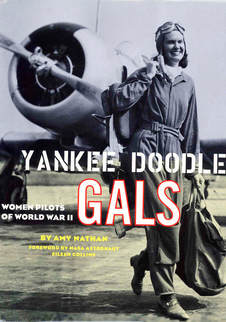 Amy Nathan's book Yankee Doodle Gals tells the stories of many women who served as pilots from 1942 to 1944, including Jacqueline Cochran and Nancy Love, the true leaders of the WASPs. The history of the group, the hardships they faced, the obstacles they overcame, and what has transpired since the end of the war are supplemented by numerous photos that complement the text. For more information on the book, click here. |
*NEWS
|
For Vicki Cobb's BLOG (nonfiction book reviews, info on education, more), click here: Vicki's Blog
The NCSS-CBC Notable Social Studies Committee is pleased to inform you
that 30 People Who Changed the World has been selected for Notable Social Studies Trade Books for Young People 2018, a cooperative project of the National Council for the Social Studies (NCSS) & the Children’s Book Council
Categories
All
Abolitionists
Adams Janus
Adaptation
Adaptations
Adkins Jan
Advertising
Aerodynamics
Africa
African American History
African Americans
Africa West
Agriculture
Aircraft
Air Pilots
Air Pressure
Air Travel
Albee Sarah
Alchemy
Alligators
Allusion
American History
American Icons
Amphibians
Amundsen Roald
Anatomy
Ancient
Ancient Cultures
Anderson Marian 1897-1993
Animal Behavior
Animal Experimentation
Animal Intelligence
Animals
Animation
Antarctica
Ants
Apache Indians
Apes
April Fool's Day
Architecture
Argument
Arithmetic
Art
Art Deco
Artists
Arts
Asia
Astronauts
Astronomy
Athletes
Atomic Theory
Audubon Societies
Authors
Autobiography
Automobiles
Aviation
Awards
Bacteria
Baseball
Battuta Ibn
Bears
Beatles
Beavers
Bees
Biodegradation
Biography
Biology
Biomes
Biomimicry
Biplanes
Birds
Black Death
Black History
Blindness
Blizzards
Bombs
Bonaparte Napoleon
Boone Daniel
Botany
Brazil
Bridges
Brill Marlene Targ
Brooklyn Bridge
Brown John
Buffaloes
Building Materials
Butterflies
Caesar
Caesar Julius
Caissons
Calculus
Calendars
Cannibal
Capitals
Caravaggio
Carbon Dioxide
Carnivores
Carson Mary Kay
Cartoons & Comics
Carving (Decorative Arts)
Cascade Range
Castaldo Nancy
Castles
Castrovilla Selene
Cathedrals
Cats
Caves
Celts
Cemeteries
Chemistry
Children's Authors
Child Welfare
China
Choctaw Indians
Christmas
Chronometers
Cicadas
Cinco De Mayo
Ciphers
Circle
Citizenship
Civil Rights
Civil Rights Movements
Civil War
Civil War - US
Climate
Climate Change
Clocks And Watches
Clouds
Cobb Vicki
COBOL (Computer Language)
Code And Cipher Stories
Collard III Sneed B.
Collectors And Collecting
Color
Commerce
Communication
Competition
Compilers
Composers
Computers
Congressional Gold Medal
Consitution
Contests
Contraltos
Coolidge Calvin
Cooling
Corms
Corn
Counterfeiters
Covid-19
Crocodiles
Cryptography
Culture
Darwin Charles
Declaration Of Independence
Decomposition
Decompression Sickness
Deep-sea Animals
Deer
De Medici Catherine
Design
Detectives
Dickens Charles
Disasters
Discrimination
Diseases
Disney Walt
DNA
Dogs
Dollar
Dolphins
Douglass Frederick 1818-1895
Droughts
Dr. Suess
Dunphy Madeleine
Ear
Earth
Earthquakes
Ecology
Economics
Ecosystem
Edison Thomas A
Education
Egypt
Eiffel-gustave-18321923
Eiffel-tower
Einstein-albert
Elephants
Elk
Emancipationproclamation
Endangered Species
Endangered-species
Energy
Engineering
England
Englishlanguage-arts
Entomology
Environmental-protection
Environmental-science
Equinox
Erie-canal
Etymology
Europe
European-history
Evolution
Experiments
Explorers
Explosions
Exports
Extinction
Extinction-biology
Eye
Fairs
Fawkes-guy
Federalgovernment
Film
Fires
Fishes
Flight
Floods
Flowers
Flute
Food
Food-chains
Foodpreservation
Foodsupply
Food-supply
Football
Forceandenergy
Force-and-energy
Forensicscienceandmedicine
Forensic Science And Medicine
Fossils
Foundlings
France
Francoprussian-war
Freedom
Freedomofspeech
French-revolution
Friction
Frogs
Frontier
Frontier-and-pioneer-life
Frozenfoods
Fugitiveslaves
Fultonrobert
Galapagos-islands
Galleys
Gametheory
Gaudi-antoni-18521926
Gender
Generals
Genes
Genetics
Geography
Geology
Geometry
Geysers
Ghosts
Giraffe
Glaciers
Glaucoma
Gliders-aeronautics
Global-warming
Gods-goddesses
Gold-mines-and-mining
Government
Grant-ulysses-s
Grasshoppers
Gravity
Great-britain
Great-depression
Greece
Greek-letters
Greenberg Jan
Hair
Halloween
Handel-george-frederic
Harness Cheryl
Harrison-john-16931776
Health-wellness
Hearing
Hearing-aids
Hearst-william-randolph
Henry-iv-king-of-england
Herbivores
Hip Hop
History
History-19th-century
History-france
History-world
Hitler-adolph
Hoaxes
Holidays
Hollihan Kerrie Logan
Homestead-law
Hopper-grace
Horses
Hot Air Balloons
Hot-air-balloons
Housing
Huguenots
Human Body
Hurricanes
Ice
Icebergs
Illustration
Imagery
Imhotep
Imperialism
Indian-code-talkers
Indonesia
Industrialization
Industrial-revolution
Inquisition
Insects
Insulation
Intelligence
Interstatecommerce
Interviewing
Inventions
Inventors
Irrational-numbers
Irrigation
Islands
Jacksonandrew
Jazz
Jeffersonthomas
Jefferson-thomas
Jemisonmae
Jenkins-steve
Jet-stream
Johnsonlyndonb
Jokes
Journalism
Keeling-charles-d
Kennedyjohnf
Kenya
Kidnapping
Kingmartinlutherjr19291968
Kingmartinlutherjr19291968d6528702d6
Kings-and-rulers
Kings Queens
Kings-queens
Koala
Labor
Labor Policy
Lafayette Marie Joseph Paul Yves Roch Gilbert Du Motier Marquis De 17571834
Landscapes
Languages-and-culture
Law-enforcement
Layfayette
Levers
Levinson Cynthia
Lewis And Clark Expedition (1804-1806)
Lewis Edmonia
Liberty
Lift (Aerodynamics)
Light
Lindbergh Charles
Liszt Franz
Literary Devices
Literature
Lizards
Longitude
Louis XIV King Of France
Lumber
Lunar Calendar
Lynching
Macaws
Madison-dolley
Madison-james
Madison-james
Mammals
Maneta-norman
Maneta-norman
Marathon-greece
Marine-biology
Marine-biology
Marines
Marsupials
Martial-arts
Marx-trish
Mass
Massachusetts-maritime-academy
Mass-media
Mastodons
Mathematics
May-day
Mcclafferty-carla-killough
Mcclafferty-carla-killough
Mckinley-william
Measurement
Mechanics
Media-literacy
Media-literacy
Medicine
Memoir
Memorial-day
Metaphor
Meteorology
Mexico
Mickey-mouse
Microscopy
Middle-west
Migration
Military
Miners
Mississippi
Molasses
Monarchy
Monsters
Montgomery
Montgomery-bus-boycott-19551956
Montgomery-heather-l
Monuments
Moon
Moran-thomas
Morsecode
Morsesamuel
Moss-marissa
Moss-marissa
Motion
Motion-pictures
Mummies
Munro-roxie
Munro-roxie
Musclestrength
Museums
Music
Muslims
Mythologygreek
Nanofibers
Nanotechnology
Nathan-amy
Nathan-amy
Nationalfootballleague
Nationalparksandreserves
Nativeamericans
Native-americans
Native-americans
Naturalhistory
Naturalists
Nature
Nauticalcharts
Nauticalinstruments
Navajoindians
Navigation
Navy
Ncaafootball
Nervoussystem
Newdeal19331939
Newman-aline
Newman-aline
Newton-isaac
New-york-city
Nobelprizewinners
Nomads
Nonfictionnarrative
Nutrition
Nylon
Nymphs-insects
Oaths Of Office
Occupations
Ocean
Ocean-liners
Olympics
Omnivores
Optics
Origami
Origin
Orphans
Ottomanempire
Painters
Painting
Paleontology
Pandemic
Paper-airplanes
Parksrosa19132005
Parrots
Passiveresistance
Patent Dorothy Hinshaw
Peerreview
Penguins
Persistence
Personalnarrative
Personification
Pets
Photography
Physics
Pi
Pigeons
Pilots
Pinkertonallan
Pirates
Plague
Plains
Plainsindians
Planets
Plantbreeding
Plants
Plastics
Poaching
Poetry
Poisons
Poland
Police
Political-parties
Pollen
Pollution
Polo-marco
Populism
Portraits
Predation
Predators
Presidentialmedaloffreedom
Presidents
Prey
Prey-predators
Prey-predators
Prime-meridian
Pringle Laurence
Prohibition
Proteins
Protestandsocialmovements
Protestants
Protestsongs
Punishment
Pyramids
Questioning
Radio
Railroad
Rainforests
Rappaport-doreen
Ratio
Reading
Realism
Recipes
Recycling
Refrigerators
Reich-susanna
Religion
Renaissance
Reproduction
Reptiles
Reservoirs
Rheumatoidarthritis
Rhythm-and-blues-music
Rice
Rivers
Roaringtwenties
Roosevelteleanor
Rooseveltfranklind
Roosevelt-franklin-d
Roosevelt-theodore
Running
Russia
Safety
Sanitation
Schwartz David M
Science
Scientificmethod
Scientists
Scottrobert
Sculpture
Sculpturegardens
Sea-level
Seals
Seals-animals
Secretariesofstate
Secretservice
Seeds
Segregation
Segregationineducation
Sensessensation
September11terroristattacks2001
Seuss
Sextant
Shackletonernest
Shawneeindians
Ships
Shortstories
Silkworms
Simple-machines
Singers
Siy Alexandra
Slavery
Smuggling
Snakes
Socialchange
Social-change
Socialjustice
Social-justice
Socialstudies
Social-studies
Social-studies
Sodhouses
Solarsystem
Sound
Southeast-asia
Soybean
Space Travelers
Spain
Speech
Speed
Spiders
Spies
Spiritualssongs
Sports
Sports-history
Sports-science
Spring
Squirrels
Statue-of-liberty
STEM
Storms
Strategy
Sugar
Sumatra
Summer
Superbowl
Surgery
Survival
Swanson-jennifer
Swinburne Stephen R.
Synthetic-drugs
Taiwan
Tardigrada
Tasmania
Tasmanian Devil
Tasmanian-devil
Technology
Tecumsehshawneechief
Telegraph-wireless
Temperature
Tennis
Terrorism
Thomas Peggy
Thompson Laurie Ann
Time
Titanic
Tombs
Tortoises
Towle Sarah
Transcontinental-flights
Transportation
Travel
Trees
Trung Sisters Rebellion
Tundra
Turnips
Turtles
Typhoons
Underground Railroad
Us-environmental-protection-agency
Us History
Us-history
Ushistoryrevolution
Us History Revolution
Us-history-war-of-1812
Us Presidents
Ussupremecourtlandmarkcases
Vacations
Vaccines
Vangoghvincent
Vegetables
Venom
Vietnam
Viruses
Visual-literacy
Volcanoes
Voting-rghts
War
Warne-kate
Warren Andrea
Washington-dc
Washington George
Water
Water-currents
Wax-figures
Weapons
Weather
Weatherford Carole Boston
Whiting Jim
Wildfires
Winds
Windsor-castle
Wolves
Woman In History
Women
Women Airforce Service Pilots
Women-airforce-service-pilots
Womeninhistory
Women In History
Women-in-science
Women's History
Womens-roles-through-history
Wonder
Woodson-carter-godwin-18751950
World-war-i
World War Ii
World-war-ii
Wright Brothers
Writing
Writing-skills
Wwi
Xrays
Yellowstone-national-park
Zaunders Bo
ArchivesMarch 2021
February 2021
January 2021
December 2020
November 2020
October 2020
September 2020
June 2020
May 2020
April 2020
March 2020
February 2020
January 2020
December 2019
October 2019
September 2019
August 2019
July 2019
May 2019
April 2019
March 2019
February 2019
January 2019
December 2018
November 2018
September 2018
June 2018
May 2018
April 2018
March 2018
February 2018
January 2018
December 2017
November 2017
October 2017
September 2017
March 2017
The NONFICTION MINUTE, Authors on Call, and. the iNK Books & Media Store are divisions of iNK THINK TANK INC.
a 501 (c) (3) nonprofit corporation. To return to the iNK Think Tank landing page click the icon or the link below. :
http://inkthinktank.org/
For more information or support, contact thoughts@inkthinktank.org
For Privacy Policy, go to
Privacy Policy
© COPYRIGHT the Nonfiction Minute 2020.
ALL RIGHTS RESERVED.
This site uses cookies to personalize your experience, analyze site usage, and offer tailored promotions. www.youronlinechoices.eu
Remind me later
Archives
March 2023
February 2023
January 2023
December 2022
November 2022
October 2022
September 2022
June 2022
May 2022
April 2022
March 2022
February 2022
January 2022
December 2021
November 2021
September 2021
April 2021
March 2021
February 2021
November 2020
October 2020
September 2020
June 2020
May 2020
April 2020
March 2020
February 2020
January 2020
October 2019
August 2019
July 2019
May 2019
April 2019
December 2018
September 2018
June 2018
May 2018
March 2018
February 2018
January 2018
December 2017
November 2017
October 2017
September 2017

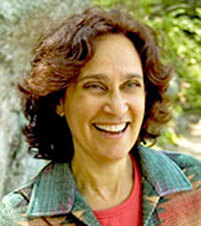

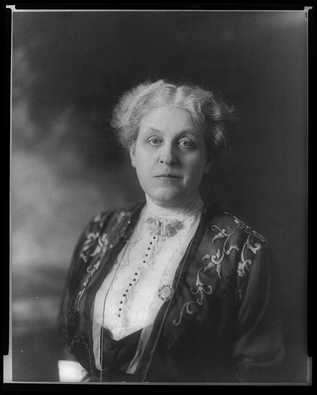
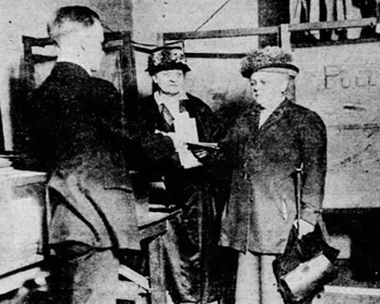
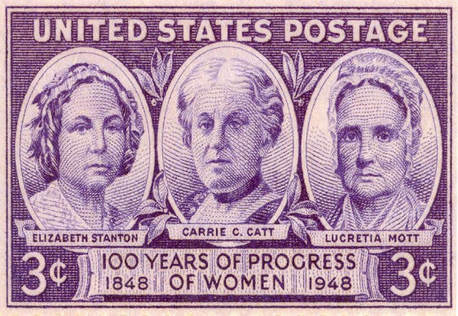

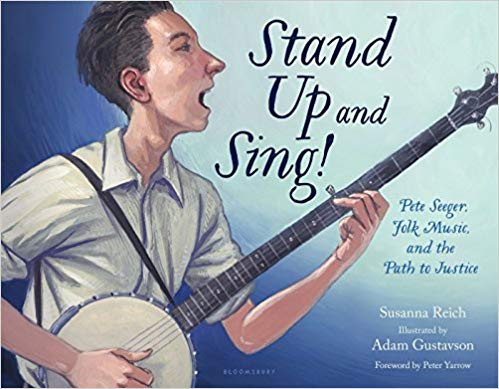

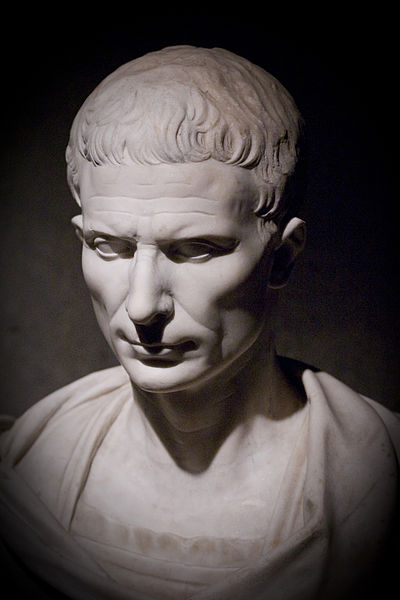

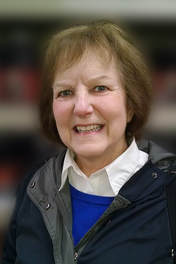

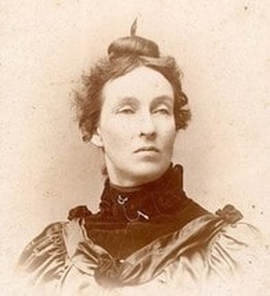
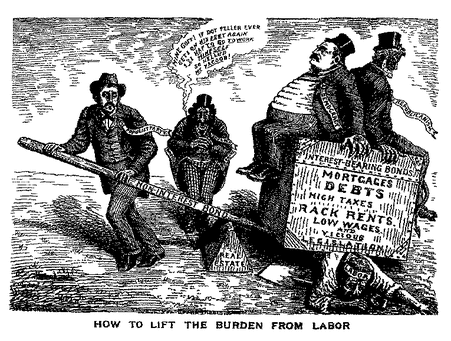

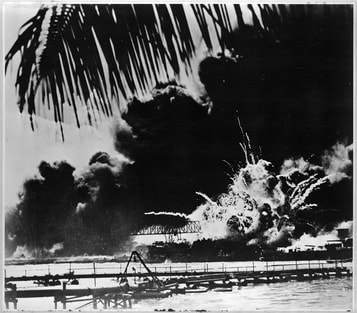
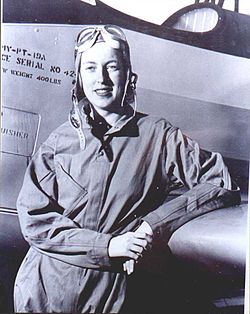
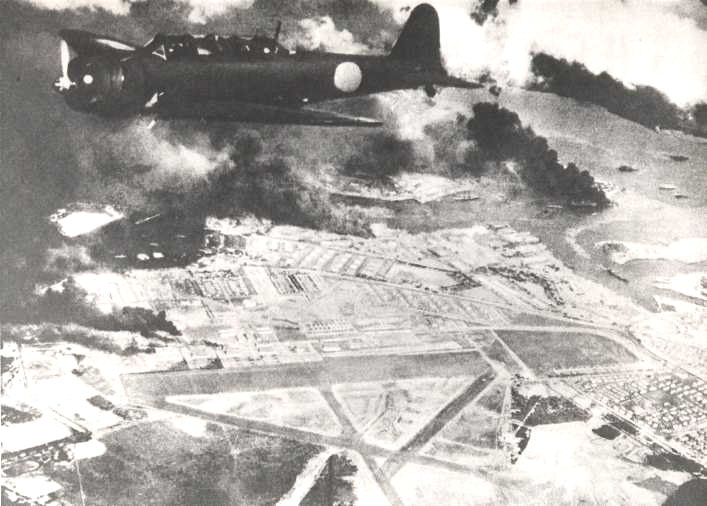
 RSS Feed
RSS Feed
